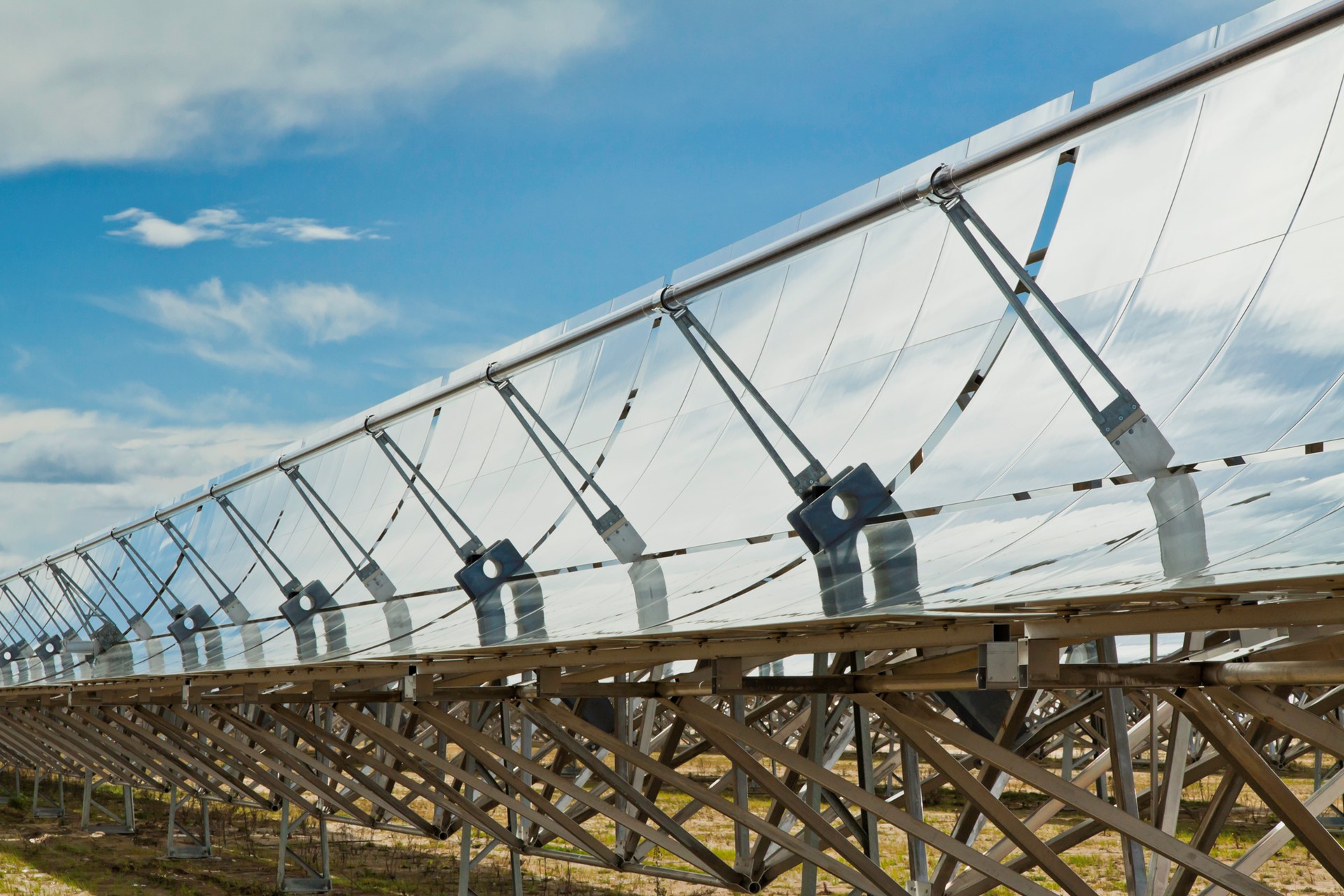
Our Energy Future: Concentrated Solar Power
Read time:
Concentrated Solar Power (CSP) uses mirrors to direct sunlight onto a receiver, converting light into heat. CSP sites are generally very large and best suited to environments with open, empty land, “low quality land” that cannot be used for cultivation or large-scale infrastructure projects, or areas with high insulation. Here, we investigate how the technology works and what we can expect to see from it in the future.
In Lehman’s terms, CSP projects sunlight onto a single spot using mirrors, converting sunlight into heat, and heat into steam which is channelled through a turbine engine to generate electricity.
Unlike solar PV, CSP can store thermal energy. CSP plants use thermal energy storage systems to generate electricity during periods of low or no sunlight, making it a flexible source of clean energy. By utilising large open space in hotter, sunnier climates, the CSP stands to generate large quantities of solar energy throughout the day using mirror technology, servicing energy demand on a continuous basis.
In total, there are four types of CSP:
The IEA estimates that roughly 11.3 per cent of the global electricity demand could be serviced by CSP by 2050.
China presently has the greatest capacity for CSP, with potential to harness 12.3 GWh of CSP by 2026, followed by 8.1 GWh for Spain, 3.9 GWh for Morrocco, and 3.5 GWh for South Africa. However, Spain are the current global leaders with 51 installed CSP projects, accounting for 42 per cent of global installed CSP plants, followed by 27 in the US, and 24 in China.
In terms of its advantages, CSP is a renewable energy source and, since it relies on the sun, its supply will never be exhausted. What’s more, once installed it has relatively low maintenance and running costs, less associated risks than other clean energy sources, such as nuclear power plants, and can be used as a store of energy, providing consistent electricity.
However, CSP is not without its challenges. Firstly, the environmental conditions required for CSP projects, such as large open space, unpopulated areas, and land with long-periods of sunlight, make it ideally suited to a select few regions of the world. The UK, for example, currently has no active CSP plants.
Cost is the most significant barrier to CSP energy generation. Although the cost of producing CSP dropped 69 per cent between 2010 and 2022, CSP remains one of the most expensive renewable energy sources in terms of installed costs. According to the International Renewable Energy Agency (IRENA), the installed cost of CSP in 2022 was $4,274/kW, followed by $3,478/kW for geothermal energy, and $3,461/kW for offshore wind. The principal driver of these costs is thermal energy storage, which is complex to source and install, yet CSP relies upon this to function.
In order to tap into the potential of CSP across the globe, efficient pipelines reaching countries without immediate capacity to utilise its benefits will be necessary to blend CSP into global renewable energy strategies.



